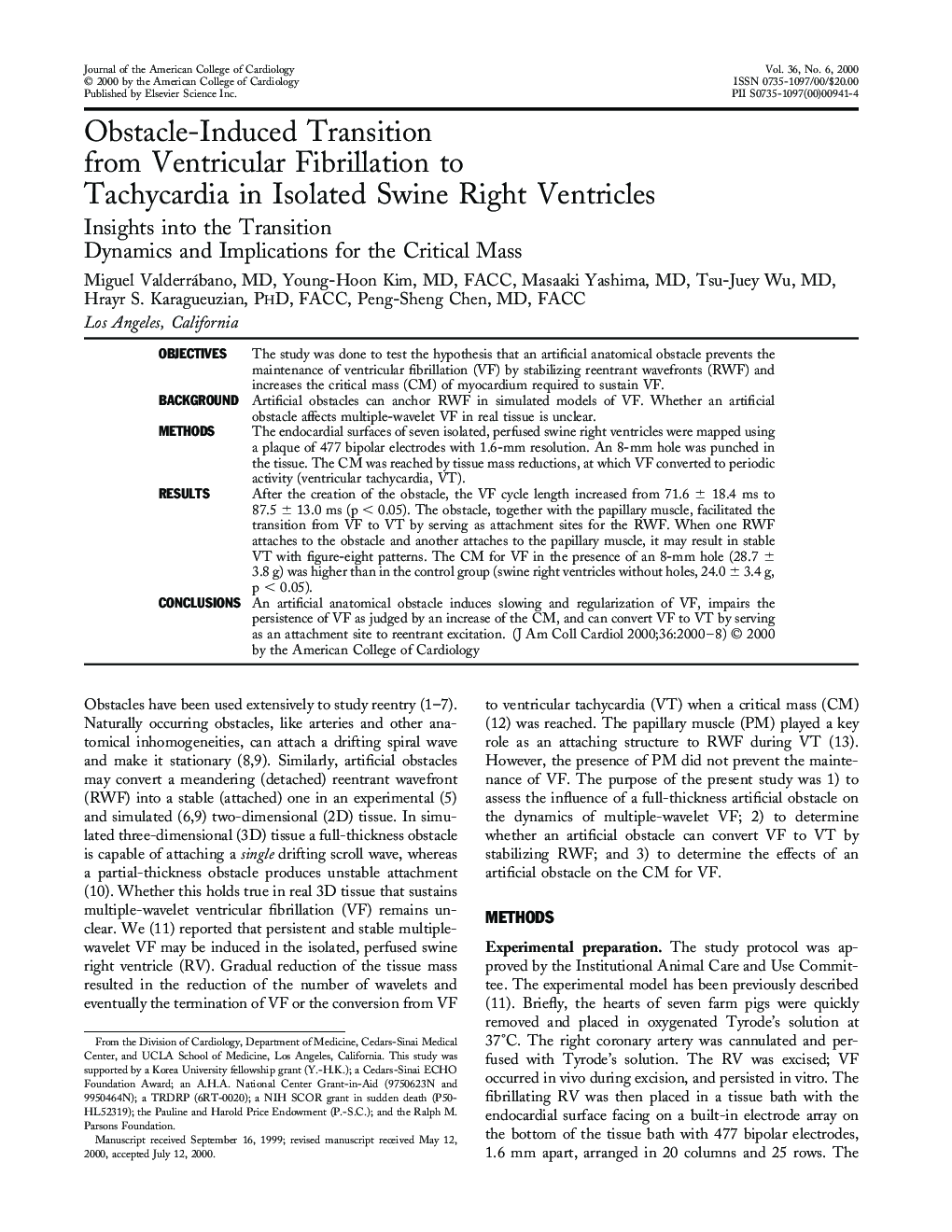| Article ID | Journal | Published Year | Pages | File Type |
|---|---|---|---|---|
| 2955741 | Journal of the American College of Cardiology | 2008 | 9 Pages |
OBJECTIVESThe study was done to test the hypothesis that an artificial anatomical obstacle prevents the maintenance of ventricular fibrillation (VF) by stabilizing reentrant wavefronts (RWF) and increases the critical mass (CM) of myocardium required to sustain VF.BACKGROUNDArtificial obstacles can anchor RWF in simulated models of VF. Whether an artificial obstacle affects multiple-wavelet VF in real tissue is unclear.METHODSThe endocardial surfaces of seven isolated, perfused swine right ventricles were mapped using a plaque of 477 bipolar electrodes with 1.6-mm resolution. An 8-mm hole was punched in the tissue. The CM was reached by tissue mass reductions, at which VF converted to periodic activity (ventricular tachycardia, VT).RESULTSAfter the creation of the obstacle, the VF cycle length increased from 71.6 ± 18.4 ms to 87.5 ± 13.0 ms (p < 0.05). The obstacle, together with the papillary muscle, facilitated the transition from VF to VT by serving as attachment sites for the RWF. When one RWF attaches to the obstacle and another attaches to the papillary muscle, it may result in stable VT with figure-eight patterns. The CM for VF in the presence of an 8-mm hole (28.7 ± 3.8 g) was higher than in the control group (swine right ventricles without holes, 24.0 ± 3.4 g, p < 0.05).CONCLUSIONSAn artificial anatomical obstacle induces slowing and regularization of VF, impairs the persistence of VF as judged by an increase of the CM, and can convert VF to VT by serving as an attachment site to reentrant excitation.
